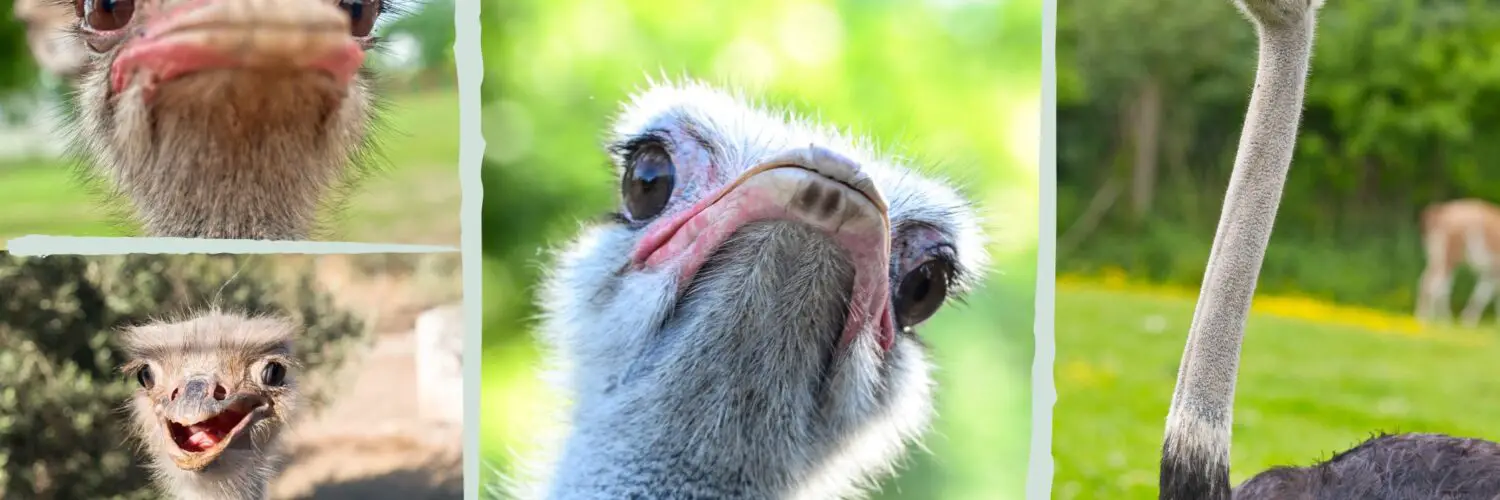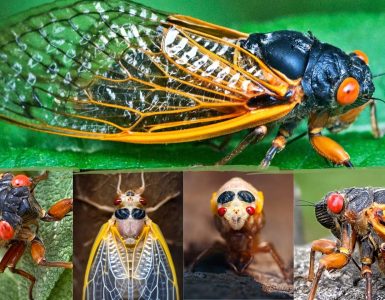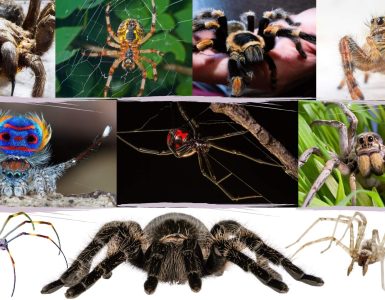Ostriches are anatomically complex flightless birds with large-round bodies, small heads and long-muscular legs. Apart from being the largest birds in the world, Ostriches are amazingly fast. These creatures are residents of the sub-Saharan parts of Africa. Their unique adaptation to the woodland-grassland ecosystem makes them incredibly fascinating. There are more amazing facts about ostrich that will blow your mind. So, check all those facts prepared for you right below here.
Ostrich Taxonomy and Habitat
The common ostrich, scientifically known as Struthio camelus, belongs to the taxonomic class Aves, which includes all birds. Despite being classified as such, ostriches are flightless birds, setting them apart from most of their avian counterparts. They are further classified into two species: the red-necked ostrich found predominantly in Central Africa, and the Somali ostrich prevalent in Eastern Africa.
Fascinatingly, ostriches live in the woodland-grassland ecosystems of the Sahara and Sub-Saharan Africa. These ostrich habitats are rich in the seeds, shrubs, grass, and small vertebrates that make up their diet, but they may also eat insects when food sources are scarce.
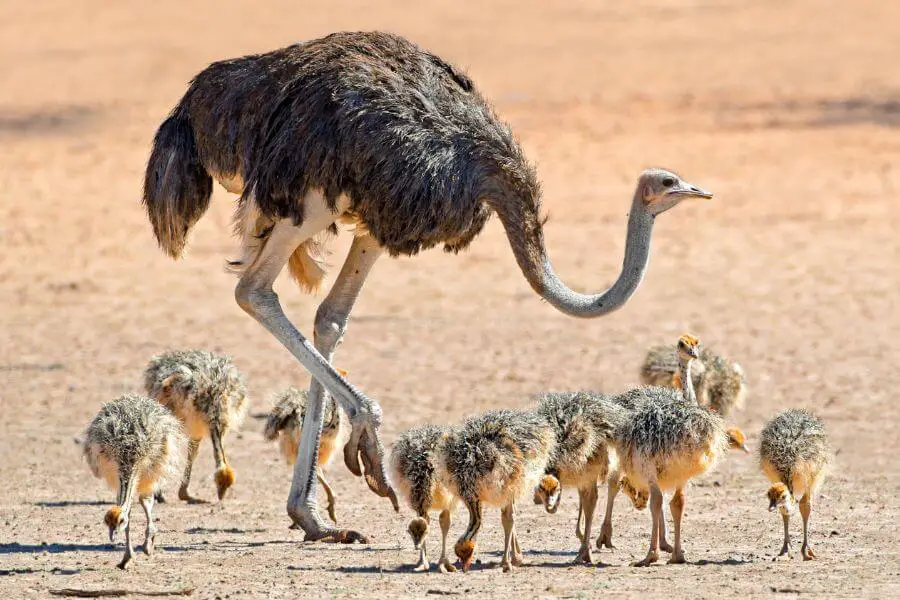
Ostrich Feeding and Reproduction Habits of Female Ostrich
Ostriches have unique feeding habits. When an ostrich senses danger, it will often swallow pebbles or sand to grind up the food in its gizzard—a specialized stomach used for grinding food—an adaptation that has helped it survive in diverse environments. During the breeding season, a single dominant male ostrich will mate with the dominant female ostrich and potentially several other females in the same flock.
This mating strategy results in a single communal nest where all the participating ostriches lay their eggs.
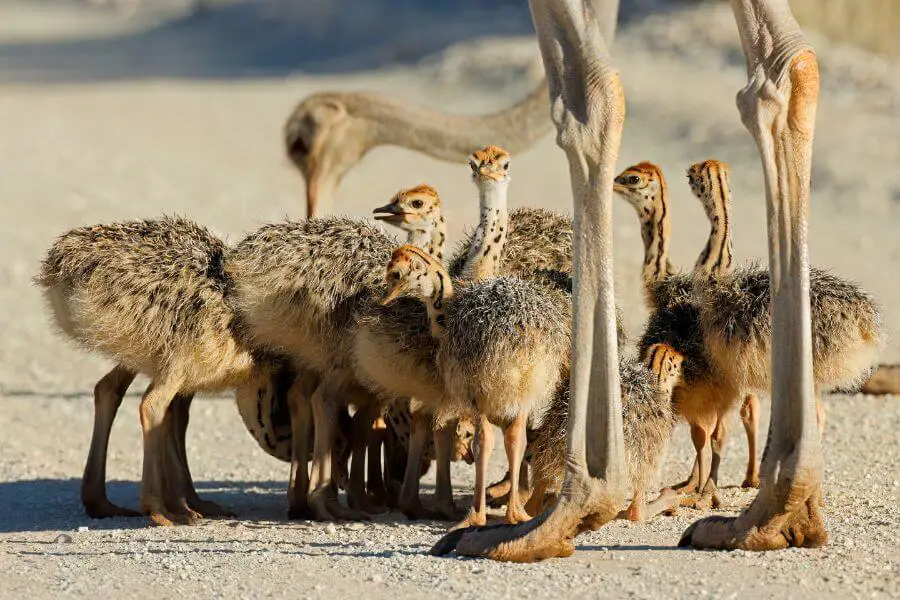
Ostrich Egg and Chicks
Perhaps one of the most astonishing ostrich facts is related to their eggs. A single ostrich egg, laid by the female ostrich, is the largest egg laid by any land animal and can weigh up to 1.5 kilograms. After the eggs have been laid in the same nest, both the male ostriches and the females take turns incubating them. Interestingly, male ostriches incubate the eggs at night due to their darker feathers, which provide better camouflage from predators.
After approximately 42 days, the ostrich chicks hatch. These baby ostriches are entirely reliant on their parents for their first few months of life, a stark contrast to the independence of other birds.
Ostrich Facts
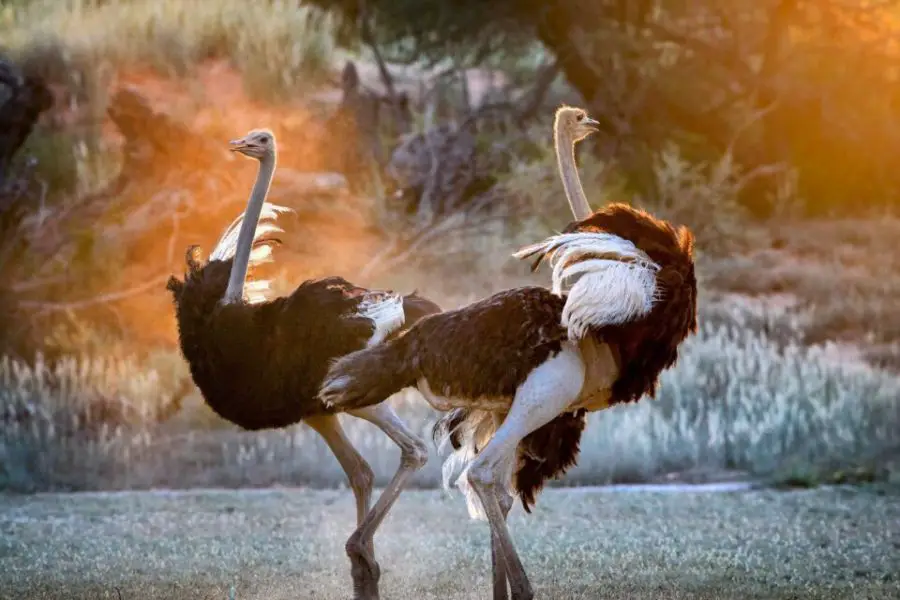 Image: Earth.com
Image: Earth.com
# 1 Ostriches are the largest bird in Earth
Being high like the Eiffel Tower over other birds, ostriches can grow as tall as nine feet, with their necks taking over half of their height. Male ostriches can weigh more than 330 pounds, whereas female ostriches weigh around 320 pounds, with slightly less height. Even if Ostriches have large bodies, their heads are much smaller.

# 2 Their eyelashes protects them from sand storms
The long, thick eyelashes are one of the focal characteristics of Ostriches. However, these eyelashes are nothing but their adaptation to the risks involved with sand storms. The common occurrence of sand storms in the semi-arid habitat can damage the vision of the ostriches. This is where either eyelash comes to help and limit the damage.
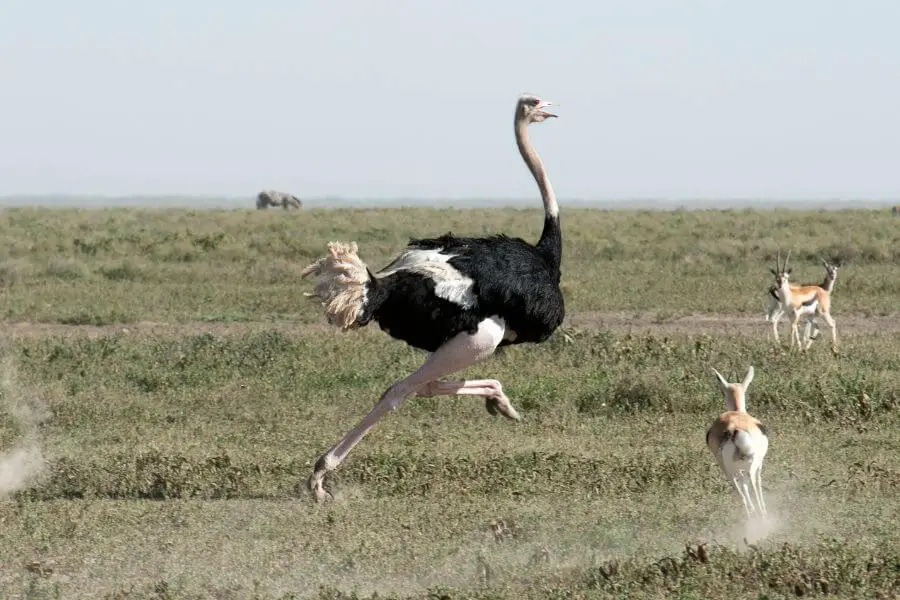
# 3 Ostriches can sprint faster than 45 miles/hour.
Ostriches can sprint over 45 miles per hour with the help of their long, muscular legs. They usually sprint so fast when they get frightened or escape a predator. The average sustained speed at which ostriches can run is about 31 miles per hour. Their long legs can go about 10-16 feet in a single stride.

# 4 Ostrich eggs: the largest eggs in the bird kingdom
Apart from being the largest bird on the planet, Ostriches also lay the largest eggs than any other bird. Ostriches eggs are primarily thick, shiny and the shells are cream-coloured. The eggs are mostly six inches in diameter and can weigh up to three pounds. These ostrich eggs have an incubation period of 30 days to 45 days.
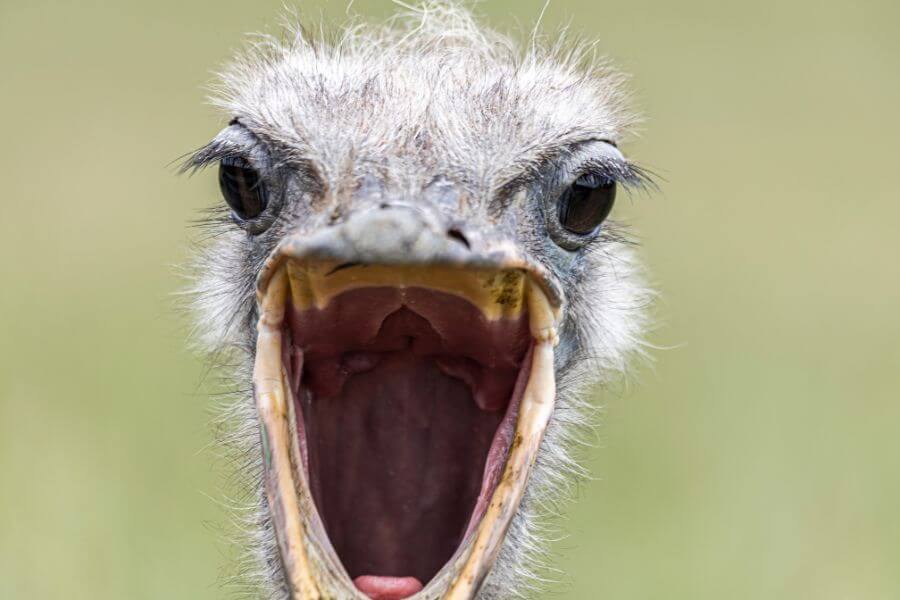
# 5 Ostriches have no teeth
Ostriches don’t have teeth similar to other modern-day birds. Being omnivores in nature, the ostriches survive on everything starting from roots, plants, lizards to insects. The ostriches don’t chew but swallow grit and rocks for breaking down food particles to digest any broad diet. This exceptional digestion procedure is further supported by their three stomachs and intestines, extending to 46 feet in length.
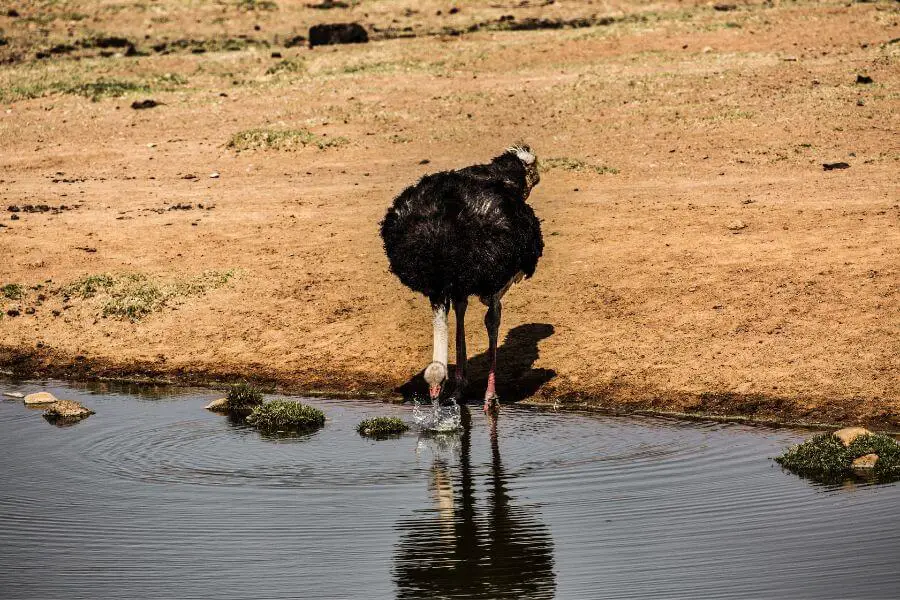
# 6 Ostriches can survive two weeks without water
Another facts about ostrich that we are sure you will like to know is the Ostriches absorb water from the watering holes whenever available, but they mostly absorb and retain water from their food consumption. Similar to the various animals that live on the savanna, ostriches can live up to two weeks without drinking water. Their capability to increase the body temperature and water retention ability help it to survive without water for such a long period.

# 7 Ostriches can kill humans by a kick
Apart from using the long legs to sprint away, Ostriches can use their strong, long necks to kick any predator, like humans. Despite other animals who kick with their back legs, ostriches have to use their front legs to kick to maintain stability or balance. This powerful kick can, in fact, result in fatality among humans.
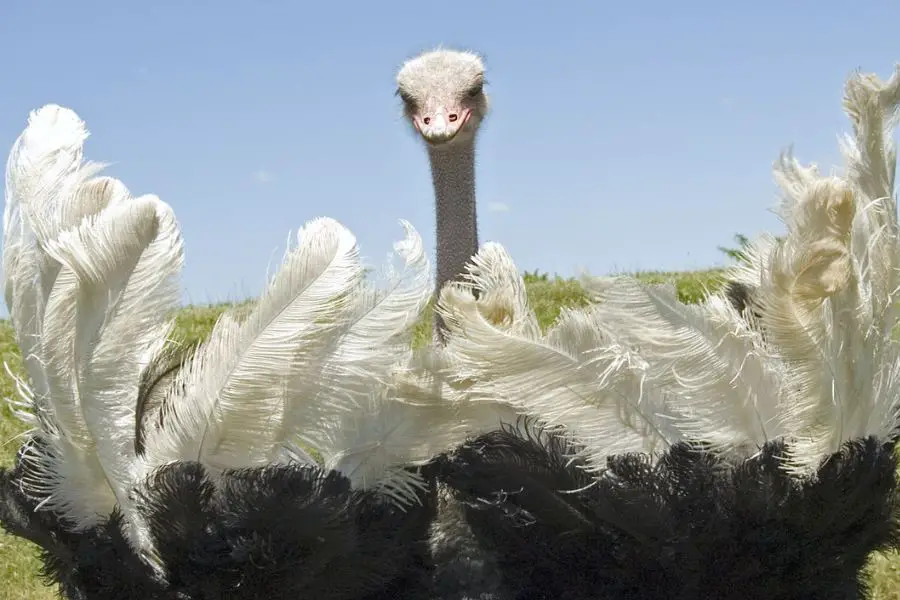 Image: Toronto Zoo
Image: Toronto Zoo
# 8 Ostriches wingspan is over six feet
Despite being flightless, ostriches have a wingspan of up to 6.6 feet. Instead of helping the birds fly, these wings help them maintain their stability while defending or running from the predators. This wingspan also acts as rudders that help them with directions while running. These wings also help ostriches during the courtship displays when they run and chase each other to claim dominance over their mates.

# 9 Ostriches don’t bury their heads in sand
In contrast to what people believe, ostriches don’t bury their heads in the sand to avoid any predators. Moreover, they don’t bury their heads at all. This is one of the ostriches’ nesting behaviour where they dig holes in the sand instead of building nests. As ostriches have to rotate their eggs multiple times a day, they are witnessed with their heads down.
There are some other interesting facts about ostrich as well. Here we just quote some of them! did you like to meet?

Final Thoughts
In conclusion, the colossal ostrich, the world’s largest bird, is a marvel of nature. Displaying unique characteristics, from the glossy plumage of ostrich feathers to their ability to survive in harsh conditions, these flightless birds are truly fascinating. The adult ostrich, whether male or female, possesses strength and speed that’s unrivaled in the bird kingdom.
Particularly in the breeding season, the male ostrich is known to put on an impressive show to win over the dominant female. Surprisingly, the phrase “heads in the sand” is a myth, as ostriches bury their enormous eggs — the average ostrich egg being the largest in the world — in the ground rather than their heads. Ultimately, while they may lack the ability to soar like flying birds, ostriches more than compensate with their myriad other interesting traits.

